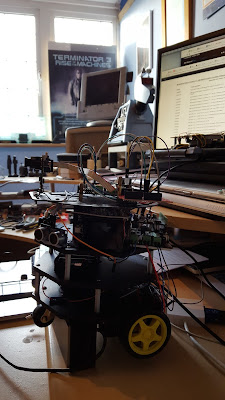PiZer0 has arrived. Too late, you missed it already.
Okay, if you've been living in a cave or working in the backend of Denmark for the past week, you would have failed to notice the new Raspberry Pi has just launched and immediately sold-out! Check it out.... now , thanks to the size format it could be an Arduino replacement. It's a lot more powerful and potentially is capable of doing a lot more for the IoT. We'll see how it pans out and whether I can actually get my hands on one, or two....or three..... Now, randomly, PiHut will sell you one from £4 -> £18 depending on the SDCard size and Pimoroni will sell you one for £8 , but they don't mention SDCards. The only downfall I see is the lack of WiFi or BLE onboard, if they could have squeezed that in, then it would have been a killer-app, oh hang on, it's hardware, killer-hard, errr... killer-thing. It would have been better. :-)






